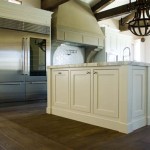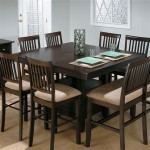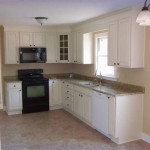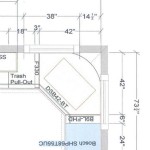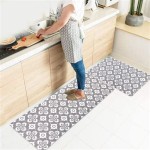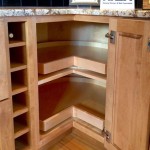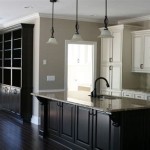How To Reface Kitchen Cupboards
Refacing kitchen cupboards offers a cost-effective way to update a kitchen's appearance without the expense and disruption of a full remodel. This process involves replacing the visible surfaces of the cabinets while retaining the existing cabinet boxes. This guide outlines the steps involved in refacing kitchen cupboards.
Planning and Preparation
Thorough planning is essential for a successful refacing project. This includes assessing the current state of the cabinets, selecting new materials, and gathering the necessary tools.
- Assess Cabinet Condition: Inspect the cabinets for any damage, such as warping or water damage. Minor repairs can often be made, but severely damaged cabinets might necessitate replacement.
- Choose New Materials: Select the desired door style, finish, and hardware. Options include wood veneers, rigid thermofoil (RTF), and painted finishes. Consider the existing kitchen décor when making selections.
- Measure Carefully: Accurate measurements of all cabinet surfaces are crucial for ordering the correct amount of materials. Double-check all measurements before placing orders.
- Gather Tools and Supplies: Assemble the necessary tools, including a screwdriver, measuring tape, level, drill, and safety glasses. Purchase adhesive, veneer trimming tools, and any other required supplies.
- Prepare the Work Area: Clear the countertops and protect them with drop cloths. Ensure adequate ventilation by opening windows.
Removing Old Cabinet Doors and Hardware
The next step involves carefully removing the existing cabinet doors and hardware to prepare for the new surfaces.
- Label Doors and Drawers: Label each door and drawer to ensure correct reinstallation after refacing. Numbering the doors and corresponding cabinet openings simplifies this process.
- Remove Doors and Drawer Fronts: Unscrew the hinges and remove the doors and drawer fronts. Keep all screws organized for potential reuse.
- Remove Existing Hardware: Remove all knobs, pulls, and hinges from the doors and drawer fronts. If reusing hardware, clean it thoroughly.
- Clean Cabinet Surfaces: Clean the cabinet frames thoroughly with a degreaser to remove any grease or grime. This ensures proper adhesion of the new veneer.
Applying New Veneer
Applying the new veneer is a critical step in the refacing process, requiring precision and patience.
- Cut Veneer to Size: Carefully measure and cut the veneer to the exact dimensions of the cabinet frames and drawer fronts. Allow for a slight overhang for trimming.
- Apply Adhesive: Apply a thin, even layer of contact cement or veneer adhesive to both the cabinet surface and the back of the veneer.
- Position and Press Veneer: Carefully position the veneer onto the cabinet surface and press firmly, working from the center outwards to eliminate air bubbles. Use a veneer roller to ensure proper adhesion.
- Trim Excess Veneer: Use a sharp utility knife or veneer trimming tool to trim any excess veneer along the edges for a clean, flush finish.
Installing New Doors and Hardware
With the new veneer in place, it’s time to install the new or refinished doors and drawer fronts along with the new or cleaned hardware.
- Prepare Doors and Drawers: If using new doors and drawer fronts, ensure they are the correct size and finish. If refinishing existing doors, ensure they are clean and prepped for new hardware.
- Install Hinges: Install the new hinges on the cabinet frames and the doors, aligning them carefully for proper opening and closing.
- Attach Doors and Drawer Fronts: Attach the doors and drawer fronts to the cabinet frames, ensuring they are level and evenly spaced.
- Install Hardware: Install the new or cleaned hardware, such as knobs and pulls, onto the doors and drawer fronts.
Finishing Touches
The final steps involve adding finishing touches and cleaning up the work area.
- Apply Edge Banding (if necessary): Apply edge banding to any exposed edges of the veneer for a professional and polished look.
- Caulk Seams (if necessary): Caulk any seams between the veneer and the cabinet frames for a seamless appearance and to prevent moisture intrusion.
- Clean Up: Clean the work area thoroughly, removing any debris, dust, and leftover materials. Dispose of waste properly.

Best Kitchen Cabinet Refacing For Your Home The

Our Refacing Process Kitchen Magic

How To Resurface Kitchen Cabinets 2024 Guide Forbes Home

How Do I Prepare My Kitchen For A Cabinet Refacing Project

How Does Kitchen Cabinet Refacing Work

Kitchen Cabinet Refacing Makeover A Homeowner S Experience

Cabinet Refacing Process And Cost Compared To Painting

Kitchen Cabinet Refacing Review Why We Chose It For Our Home Kaitlin Madden

Kitchen Cabinet Refacing How To Redo Cabinets

Cabinet Refacing Vs Painting Which Is Right For You

